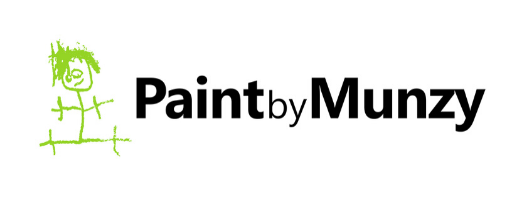
6 Things To Consider When Commissioning A Painting
There are many possible motivations for commissioning an original painting.
Perhaps you’re looking for a memorable gift for that special birthday, retirement or wedding? Or maybe you’ve fallen in love with an artist’s work and they just don’t have that perfect piece you’re hoping for that fits your space.
No matter what the motivation might be, commissioning an original painting can be a daunting task, especially when you’re not quite sure where to start.
Working with an artist can and should be an exciting process when armed with the right questions and fair expectations! After years of managing commissioned painting consultations for my brother and artist Jonathan Munz, I wanted to share a few base questions we ask that have created a pleasant experience for both the artist and our happy clients.
1. Budget
Whether it be a commissioned painting or canvas print for your space, this is the most important place to start when considering any kind of art purchase. Any artist that you’re working with should be able to provide a price list for their work showing available sizes and costs. Ultimately, your budget will dictate what sizes are possible for your commissioned painting.
Some artist will offer their clients the opportunity to make instalment payments over a period of time. The amount for each instalment should be agreed on by you and the artist in order to produce an invoice that outlines your payment plan for both your records. Be prepared to take ownership of your new art after your final instalment payment has been made, although some artist might be flexible with their terms.
Note: The prices of commissioned paintings can be more expensive than the artist’s original works due to the additional time needed to plan for commissions and source the appropriate materials required.
2. Reproductions
With advancements in modern technology, prints have become a reliable source of income for some professional artists. If you are hoping to retain creative rights to your commissioned piece you can expect to pay an additional fee in order to do so.
Personal Note: I’ve always believed that rarity doesn’t necessarily increase the value of a piece in this day and age. The more demand there is for a print of a painting, the more precious the original piece becomes. After 5 years of business at our Paint By Munzy Art Gallery, we’ve found our clients like to encourage reproductions of their pieces for this very reason: they’re proud to own the one and only original.
3. Space
Do you have a specific space in mind for your new piece? The artist you’re commissioning might be able to help make some size recommendations if you’re open to suggestions. If you already have a size in mind but aren’t 100% sure, try using green painters tape to mark an outline on the wall to give you an idea of how the painting might fit the space.
4. Subject - What Do You Want Painted?
Custom: Using Clients Photo
Hoping to have one of your own photos translated into an original painting? If an artist is willing to work with a reference photo you provided, it might be possible to capture one of life’s memories or your favourite place.
Note: Be prepared to share more then one photograph for the artist to choose from. Sometimes the artist will crop an image or slightly alter it to try to work with your requested canvas size.
Custom: Using A Previously Painted Piece By the Artist
Has the artist you’re hoping to work with created a painting in the past that you loved but it already sold? Or perhaps the piece wasn’t the right size for your space?
Often artists are willing to create paintings based on previous works they’ve created. They can work with size, subject and colour schemes specifically requested by their clients. Although the artist might not want to create the exact same painting, they might be comfortable to produce something similar to a previous piece as a part of a collection. When my brother paints custom pieces based on his own work, he likes to create something slightly different so clients don’t end up owning the exact same painting as someone else.
This might sound silly but if you’ve found an artist whose work you truly admire, it’s always best to let them be as creative with their process as possible.
Note: Be sure that you love the style of the commissioned artist for what it is. If you were looking to get a landscape oil painting commissioned, you wouldn’t find an artist who paints watercolour portraits right?
5. Timeline
Commissioning art is a process that requires planning. It’s always best to give yourself and the artist a few months time for any custom paintings. Completion time is often dependent on the artists availability (do they have other paintings on the go?) and the size of the painting itself. Smaller paintings of course usually require less time, 1 month - 2 months, while larger paintings can take anywhere from 3 months to a year depending on the artists schedule and painting process.
6. Viewings
Months have passed and it’s time to view your commissioned painting! Reveals can be awkward and nerve racking for both the artist and client. Don’t be surprised if it takes you time to warm up to your new painting. You might have created an image of what the finished piece will look like and be taken aback as an initial response. Don’t worry if this happens to you! You’re bound to fall in love with your one-of-a-kind, original masterpiece that is hand-painted just for you.
Now get out there and have fun making your artistic vision come to life. Happy commissioning.

Comments
Ursula Munz said:
Extremely well presented information! This makes it much easier for the customer to get the most rewarding experience for their artistic wants and budget!